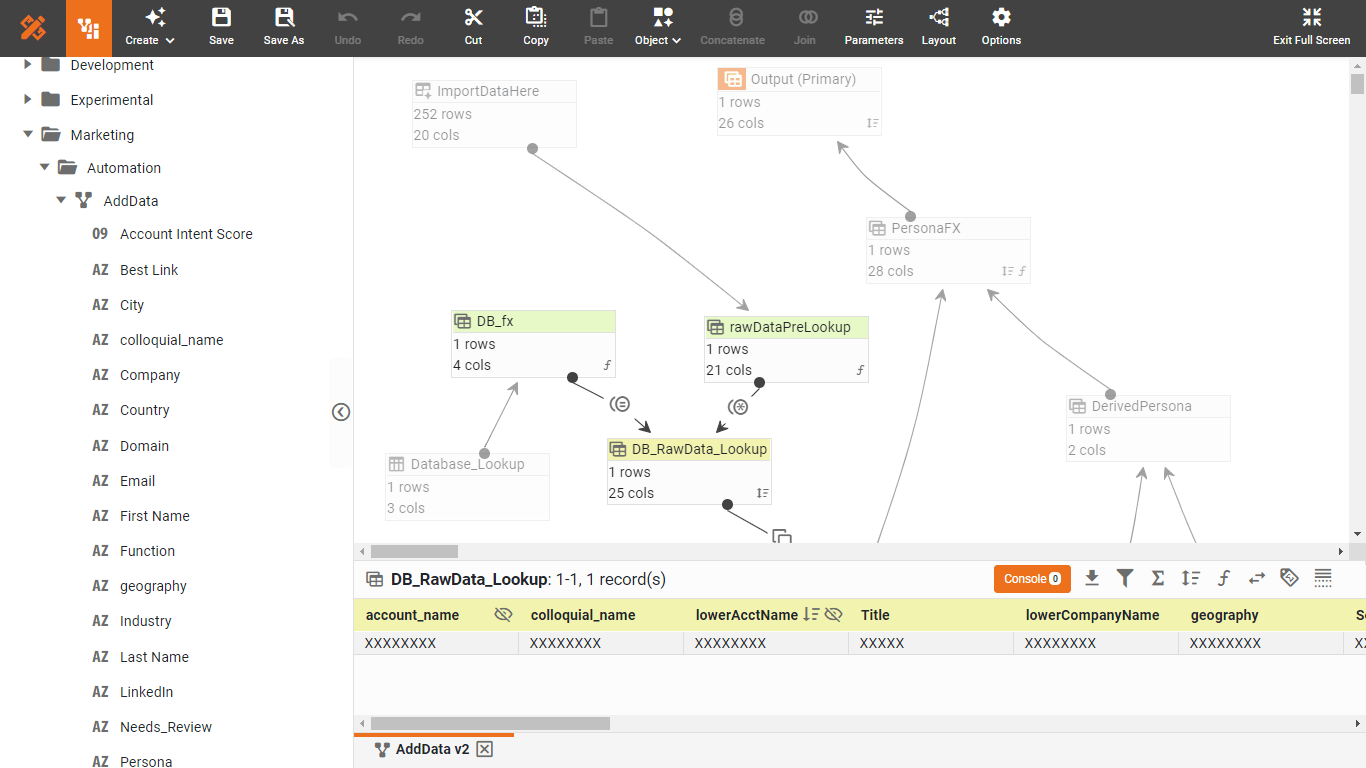InetSoft's Drag and Drop Data Modeler
The Data Modeler included in InetSoft's business intelligence software, Style Intelligence, lays the foundation for InetSoft's patent-pending Data Block technology.
The Data Modeler is used to connect to various data sources, define semantic layers, and create queries. These semantic layers (logical models) and queries are atomic data blocks that can be manipulated and combined in a data worksheet, InetSoft's term for where database fields are selected and transformed.
The various data sources that you can access are databases, objects, and flat files. Databases include data warehouses, data marts, mainframes, operational data stores (ODS), multi-dimensional databases (OLAP), and transactional databases (OLTP). Objects include web services, cloud databases, enterprise application, spreadsheets and more.
Data Block architecture makes InetSoft's approach to meta-data modeling different from other business intelligence platforms. Instead of focusing on pre-purposed business intelligence needs, we concentrate on designing data blocks that represent data in a way that is understandable to business users. These data blocks can then be assembled for different needs as those needs arise.
| #1 Ranking: Read how InetSoft was rated #1 for user adoption in G2's user survey-based index | Read More |
Configuring Data Source and Query Registries
The Data Modeler uses two XML files to store the data source/model and query definitions (datasource.xml and query.xml respectively). These are called registries. The first time the Data Modeler is launched, a configuration dialog pops up to allow the user to specify the location of the files.
Data Source/Query Tree
The left-hand pane displays a tree which lists the available data sources and their associated queries.
A data source provides connection information. The information needed varies depending on the type of the data source (e.g., a relational database requires a driver and URL). For more complex data sources, such as EJB or CORBA, the data source objects also contain the meta-data information. Relational (JDBC) data sources may also have associated data models (discussed in the following sections). A data source can have multiple data models, but each data model can only use one data source. Likewise, each query is associated with one data source. An individual data source’s queries may be grouped into folders.
Relational Databases
A relational database is accessed through either data models or queries. Queries and data models also complement and combine with each other in the Data BlockTM architecture. Because the data model offers maximum flexibility for end user self-service, it is recommended in most situations. However, if ad hoc query is not needed, and you want more control over what the database executes, queries give you that power.
Learn how InetSoft's data intelligence technology is central to delivering efficient business intelligence. |
Data Source Configuration
Before building data models or queries, you need to setup a data source so that the Data Modeler can connect to the database. The query engine supports all relational databases with available JDBC drivers 3.0 and above. This includes all major commercial and open source databases such as Oracle, SQL Server, DB2, Sybase, Informix, MySQL, PostgreSQL, MS Access, and more.
The ‘New Data Source’ wizard guides the process. The wizard asks for the following information:
- Data Source Name: give a name to the data source to be created.
- Data Source Type: select ‘JDBC’
- JDBC type: select the database type
- JDBC URL: the connection URL. Obtain from DBA
- User/Password: the database login name and password
- Create OLAP Domain: read multidimensional database info



